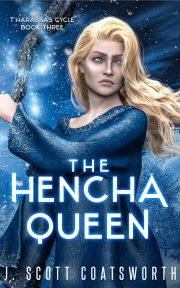Try Writing Comics
by Sara Ryan
 I’m going to assume that if you’re reading this blog, you’re a writer. But I won’t assume anything about your experience with comics. Maybe you’re a longtime comics fan. Maybe you have a pull list at a local shop. Maybe you support creators via Patreon. Maybe you contribute to Kickstarters to fund print editions of independent graphic novels and anthologies. Maybe you organize your time at cons to visit Artist’s Alley, to get signatures and commission sketches. Maybe you have alerts set up for when all your favorite webcomics update. Maybe you haven’t even read that many comics, but you’ve found one title that engaged you and made you curious about the narrative possibilities of the format. Maybe you have a friend who’s an artist, and you’ve started thinking about collaborating. Maybe you’re an artist yourself, but you haven’t had experience with sequential storytelling. Maybe you’ve been approached by a publisher to write a script adapting one of your own short stories or novels into comics. Maybe you’re already writing comics and you have your own opinions about the benefits and challenges of the format.
I’m going to assume that if you’re reading this blog, you’re a writer. But I won’t assume anything about your experience with comics. Maybe you’re a longtime comics fan. Maybe you have a pull list at a local shop. Maybe you support creators via Patreon. Maybe you contribute to Kickstarters to fund print editions of independent graphic novels and anthologies. Maybe you organize your time at cons to visit Artist’s Alley, to get signatures and commission sketches. Maybe you have alerts set up for when all your favorite webcomics update. Maybe you haven’t even read that many comics, but you’ve found one title that engaged you and made you curious about the narrative possibilities of the format. Maybe you have a friend who’s an artist, and you’ve started thinking about collaborating. Maybe you’re an artist yourself, but you haven’t had experience with sequential storytelling. Maybe you’ve been approached by a publisher to write a script adapting one of your own short stories or novels into comics. Maybe you’re already writing comics and you have your own opinions about the benefits and challenges of the format.
Whatever your situation as a writer, I’d like to encourage you to try writing in the comics format. I keep using the word “format” to emphasize that, as advocates of comics have often been compelled to repeat, “It’s a format, not a genre.” Comics are not just about superheroes, or crime, or memoir, or humor, or romance, or journalism, or realism, or surrealism, or science fiction, or fantasy. Comics can be all those things and more. I’ll quote Scott McCloud’s definition of comics: “Juxtaposed pictorial and other images in deliberate sequence, intended to convey information and/or produce an aesthetic response in the reader.” There’s a lot of room in that definition for whatever kind of stories you want to tell.
I came to writing comics myself after a long time of focusing on prose short stories and novels, and I believe that working in different formats is a great way to stretch yourself as a writer. Here are three ways writing comics can expand your creative toolbox.
- Comics makes you think about how to structure the passage of time.
Of course, you have to structure time in prose fiction, too — you have to decide the duration of your narrative, whether it takes place chronologically or out of chronological sequence, etc. But in prose, once you’ve established an overall approach to how time passes in your story, you don’t often have to continue deciding how much time passes, say, from one sentence to the next. Whereas when you write comics, each panel represents a moment in time; the time between one panel and the next can be a minute, a decade, a century.
- Strategic juxtaposition is your friend.
Comics is all about juxtaposition: the words and pictures within each panel, within different panels on a page, and throughout the sequence of pages that comprise a complete narrative. All these juxtapositions provide narrative opportunities. You can juxtapose captions that offer one view of a situation — let’s say it’s a character relating a story in which they portray themselves as having acted with great heroism — with pictures that offer an entirely different interpretation of events, conveying through that juxtaposition that the character is an unreliable narrator. You can put two unrelated characters who are both struggling, but in very different ways and settings, literally next to each other on a page, or on facing pages, each in their own panel, and make their poses similar to reinforce what they have in common.
- You have to think visually. Really, really visually.
This may seem like a ridiculously obvious point. Comics: they’re full of pictures! But here’s the thing: when you write comics, you need to make a huge number of visual decisions. Writing for the comics format makes it very difficult to fall prey to what the Turkey City Lexicon calls white room syndrome, “a featureless set for which details have yet to be invented.” You need to consider everything from the physical appearances of your characters, to the details of the setting(s) in which they find themselves, to creating visual cues that can help the reader follow a complex narrative, to staging where everyone and everything is in each scene, in what relationship to each other and the reader. That said, certainly there are some writers whose comics scripts leave a lot of visual decisions to the artist. But I recommend that you err on the side of providing an artist what might seem like too much information. Be clear and thorough in your panel descriptions and image reference. Don’t assume the artist can read your mind. When you make thoughtful, intentional decisions about the visual details of your story, the story will be stronger. And of course, all these visual decisions are also about representation: who’s in your story? where does it happen? what’s happening? The exercise of thinking through who and what is going to be included in your story when you know that the reader will actually be seeing it as a series of images on a page or screen, rather than simply picturing the narrative in their mind, will be helpful for your next story, regardless of format.
If you’re already writing comics or thinking about writing them, if you have comments or questions, please share in the comments!
•••
Sara Ryan is a Clarion graduate whose first published comic, “Me and Edith Head,” was nominated for an Eisner Award. She is also the author of the young adult novels Empress of the World (Lambda Literary Award finalist) and The Rules for Hearts (Oregon Book Award winner), and the graphic novel Bad Houses with art by Carla Speed McNeil, which was named a best graphic novel of the year by Time, USA Today, Comic Book Resources, iBooks, Robot 6, and Paste. She will be teaching an online class, Writing the Other in Comics and Graphic Novels, on September 10th.


